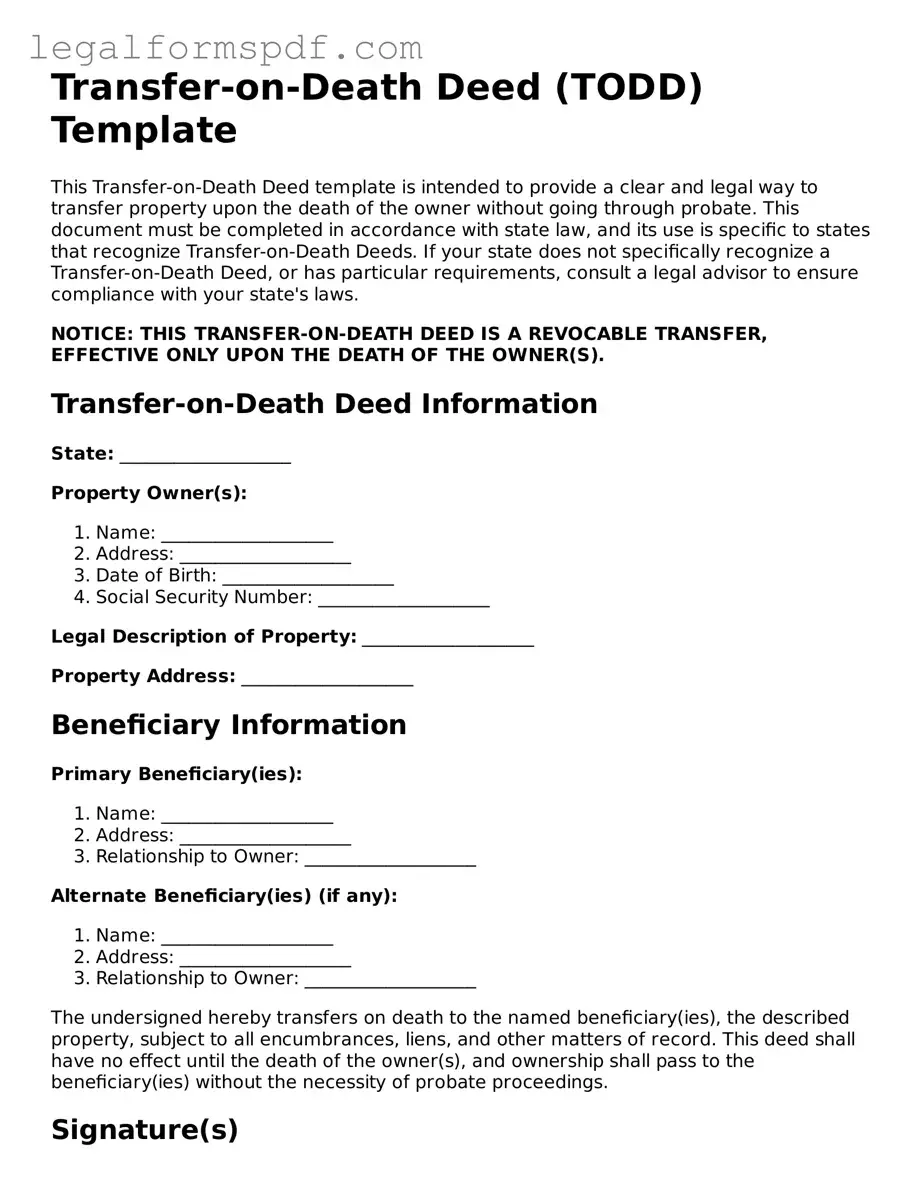Transfer-on-Death Deed (TODD) Template
This Transfer-on-Death Deed template is intended to provide a clear and legal way to transfer property upon the death of the owner without going through probate. This document must be completed in accordance with state law, and its use is specific to states that recognize Transfer-on-Death Deeds. If your state does not specifically recognize a Transfer-on-Death Deed, or has particular requirements, consult a legal advisor to ensure compliance with your state's laws.
NOTICE: THIS TRANSFER-ON-DEATH DEED IS A REVOCABLE TRANSFER, EFFECTIVE ONLY UPON THE DEATH OF THE OWNER(S).
Transfer-on-Death Deed Information
State: ___________________
Property Owner(s):
- Name: ___________________
- Address: ___________________
- Date of Birth: ___________________
- Social Security Number: ___________________
Legal Description of Property: ___________________
Property Address: ___________________
Beneficiary Information
Primary Beneficiary(ies):
- Name: ___________________
- Address: ___________________
- Relationship to Owner: ___________________
Alternate Beneficiary(ies) (if any):
- Name: ___________________
- Address: ___________________
- Relationship to Owner: ___________________
The undersigned hereby transfers on death to the named beneficiary(ies), the described property, subject to all encumbrances, liens, and other matters of record. This deed shall have no effect until the death of the owner(s), and ownership shall pass to the beneficiary(ies) without the necessity of probate proceedings.
Signature(s)
I/We, the undersigned owner(s), declare that I/we execute this document as my/our TRANSFER-ON-DEATH DEED, dated this _____ day of _______________, 20__.
Owner's Signature: ___________________
Date: ___________________
Owner's Signature (if co-owned): ___________________
Date: ___________________
State of ___________________
County of ___________________
This document was acknowledged before me on (date) ___________________ by (name(s) of signer(s)) ___________________.
Notary Public: ___________________
My commission expires: ___________________
This Transfer-on-Death Deed must be recorded with the county recorder's office prior to the owner's death in order to be effective.
Please note: This template is provided for general informational purposes and should not be considered legal advice. Consult a legal advisor in your state to ensure this document meets all legal requirements and is suitable for your specific needs.
